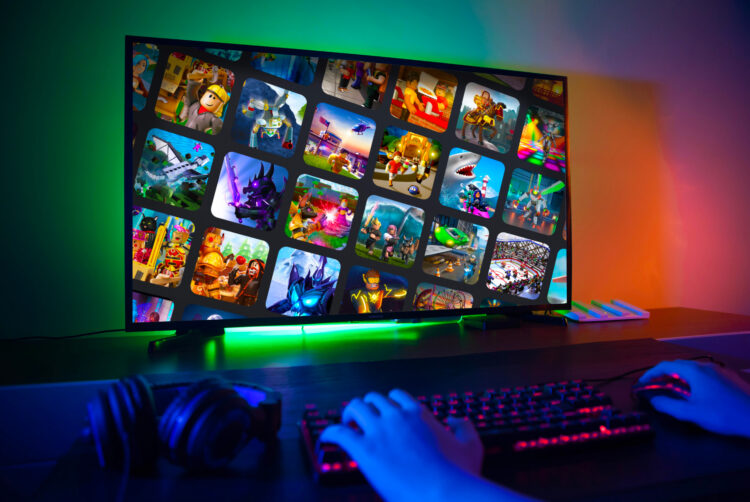Why you’re overlooking the sleeping giant in the Metaverse

Opinion
Most advertisers seem to think their brand needs its own bespoke experience on a platform like Roblox. But they are missing out on a huge, untapped opportunity with the tools already available.
In the last couple of years we’ve seen a meteoric rise in the Metaverse. Now a global buzzword where you’ll get 169 million hits on Google, a tremendous amount of discourse has been poured into what it actually entails and whether it’s even truly arrived, as people attempt to separate the hype from reality, and importantly, what it means for brands.
What is clear though, is that a huge driving force behind it’s ascendency has been down to immensely popular user generated content ‘UGC’ social gaming platforms such as Fortnite, Roblox and Minecraft, which have brought about what some term as the ‘YouTubeification’ of gaming. These platforms allow players to create their own playable content, including new levels and gameplay mechanics and to share these with other users in the community and beyond.
UGC platforms have paved the way for brands and entertainment companies to enter the world of ‘gaming’ more readily, with new arenas to showcase your brand and in essence create new ‘media channels’ which have the power to reach a mass, highly engaged, young audience on their own terms.
And brands have been entering in their droves. From Vans’s ‘Vans World’ experience on Roblox, to iHeartRadio’s ‘iHeartLand’ island on Fortnite, we’ve seen an astronomical rise in brands making the leap to take early-mover advantage in these spaces. When the Metaverse is slated to add $5 trillion to the global economy by 2030, it’s safe to say brands are stopping and taking note.
When brands are entering these platforms, it’s usually with a bespoke world or experience, something they’ve created from scratch to solely revolve around itself. And you can certainly see why, it’s tempting when you can create something where your brand is constantly showing up at every touch point and in doing so maximising exposure to the audience.
Too good an opportunity to miss
However, this has been met with varying levels of success. Whilst many bespoke experiences make perfect sense and perform tremendously well, for example Timberland’s foray into Fortnite Creative to take their “Construct:10061” boot-making process to the next level with footwear innovators and Fortnite build team Beyond Creative, other experiences have fallen flat.
In the rush to have their own bespoke experience, many brands forget the fundamentals of these platforms which is, in the foremost, to put the audience first and to ensure they are adding positively to the time spent on the platform rather than detracting from it.
What we’re now starting to see a wasteland of quick ‘one-and-done’ activations which have grabbed those all important PR headlines, but then been left out to pasture for the next, shiny new opportunity.
One can link this directly to the wider concern in media whereby we’re seeing brands and content creators alike attempting to tailor everything to an expanding universe of gated ecosystems as opposed to creating content that can live seamlessly across multiple media platforms. Yes, this strategy might work if you’re a huge advertiser, where you can essentially spread your bets and see what rises to the top, but carry on down this route and we’ll be creating an abundance of media ghettos with campaigns and activations living in isolation and becoming increasingly disparate.
It’s clear, however, that these UGC gaming platforms offer too good an opportunity to miss out on. After all, Roblox reported that an astronomical 5 billion hours were spent on the platform in January. That’s the equivalent to half a million years.
There is another way
There’s a huge, untapped opportunity — sleeping giants in waiting in the way of existing experiences, IP and maps within these platforms, being played consistently and readily poised for brands to be integrated into.
These maps have been built from the ground up by those who love, are native to, and understand the platforms best. These experiences represent billions of hours spent on these platforms, with zero paid media spend laid out to bring the audience there. They’re there because it’s a fun space to play and hang out with their friends. As an example, 3D Lab’s High School RP boasts millions of total map plays since its launch in summer 2021 with a player base which continues to grow to this day.
These experiences have been built by the community, for the community, and in some cases are perfect for brands to jump in and tap into a highly engaged audience.
The important thing will be to enter in the right manner. This audience is savvy and doesn’t like to be spoken down to. Plastering logos everywhere won’t cut the mustard, the brand will need to be woven in strategically, ensuring they’re adding to the experience and in best cases affecting the gameplay itself in a positive way. After all, that’s why players are there in the first place, to play.
So what’s right for which brands; bespoke or integrating into an existing experience? Well, there isn’t one size that fits all, and for every brand looking to enter these spaces there will be a different answer.
In general, bespoke experiences are at their best when there’s a content roadmap and a reason for the audience to come back, where the brand is keen to stick around and create a persistent space over a longer period of time. Integrations tend to work best for flashy, short term activations.
The key will be to first take a step back and ask; why are we doing this? To whom are we speaking? What do we want to say and the audience to feel about the brand? Get these questions right and this will set you on the right path to having your answer.
 Ashley Lewis is managing director of Metavision, part of the ITV Group
Ashley Lewis is managing director of Metavision, part of the ITV Group




